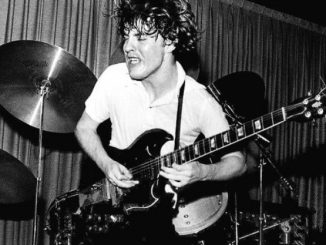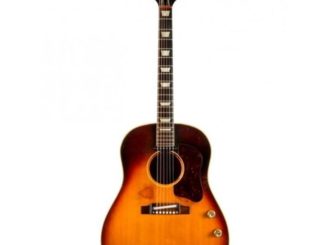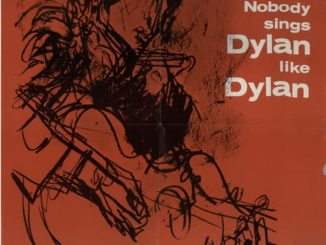Why did synth-pop emerge in Sheffield and trip-hop in Bristol? A voyage through Britain and the bands who wrote the soundtrack to decades of change by John Harris at The Guardian
o be modern is to find ourselves in an environment that promises us adventure, power, joy, growth, transformation of ourselves and the world – and at the same time that threatens to destroy everything we have, everything we know, everything we are.” These words are taken from All That Is Solid Melts into Air, Marshall Berman’s treatise on 20th-century modernity. Used as an epigraph, it begins the 2007 documentary about the English band Joy Division, and highlights one of the film’s essential themes: the relationship between that group and Manchester, and between music and cities in general.
Joy Division – along with Factory records, the pioneering record company that put out both of the band’s albums and curated their posthumous myth – came into being at a point when Manchester’s old industrial communities had been beset by years of decay and decline, which partly explains why the band’s music is so full of melancholia. But in the city’s built-up spaces, they also sensed the futuristic excitement of what Berman called “the expressway world”, instantly evoked by the opening line of their 1979 song “Shadowplay”: “To the centre of the city where all roads meet, waiting for you.”
After the death of their singer, Ian Curtis, Joy Division became New Order. The band’s earnings were poured into the Mancunian nightclub the Hacienda, which played a key early role in the city’s subsequent economic revival, these days symbolised by its vast student population and towering new skyline. So it was that a prophecy divined in Joy Division and New Order’s music came true: the old industrial city became successfully post-industrial, a feat crassly reduced to the modern British commonplace that urban regeneration depends on “culture”.
Pop music’s folklore may still be disproportionately focused on the US, but in its own way, the story of British cities – Sheffield, Leeds, Birmingham and Glasgow – and the music made in them is surely as compelling as the legends of Memphis, New Orleans, San Francisco and all the rest. Its appeal is all the greater because it is now confined to history: a tale of guitars, record labels and hit singles that finds fewer and fewer echoes in a world in which the cultural power of those things is fast decreasing. A specific story of urban British creativity began in the early 1960s with the ascent of the Beatles, and arguably drew to a close with the advent of the digital age and the demise of rock – which is not to say that the UK’s cities are no longer alive with music, but that a definite chapter has come to a close, and is ripe for exploration.
British cities were once full of musicians and rock’n’roll entrepreneurs, he explains, precisely because of their factory-based, hard-working cultures, and populations in dire need of an escape through entertainment. In keeping with age-old power structures, the London-based music industry capitalised on this in much the same way that the moneyed hawks of the capital always have: as Whitney puts it, the trade in pop and rock music amounted to “an extractive industry comparable, at least symbolically, to mining … Talent was invariably removed from the place in which it originated and polished and processed elsewhere.”
He makes this point with reference to Newcastle, and the fact that such Geordie talents as the Animals, Bryan Ferry and Sting quickly moved to London – whereas what lends the Mancunian element of this story a lot of its power is the fact that most of its successful post-1970s musicians stayed put, and thereby powered the city’s turnaround. But in either case, the point is clear. You would never have got the cultural without the industrial – something that, ironically, explains why the regenerated cities with economies built around services and “culture” haven’t yet managed to equal the creative achievements of the past (the last big-selling band to emerge from the conurbation around Manchester, for example, were Elbow, who put out their first record in 1999).
If that sounds a little too theoretical, Whitney is also good when he zeroes in on particular musicians and places, and muses on the links between them. While walking around the surburban parts of Liverpool that were once the home of John Lennon and Paul McCartney, he makes a superb observation: “Its parks, avenues and bucolic lanes opened a wormhole into the idyllic version of Englishness … you could abstract from the Sgt Pepper album: bandstands and hedgerows and a sense of purposeful leisure.” He writes with real insight about Sheffield, its late-modernist urban expanse, and the futuristic sensibilities of so many of its bands, several of whom took inspiration from A Clockwork Orange (the source of the names of Heaven 17, Clock DVA and the 1990s dance act Moloko). It is also good to read an extended tribute to the Blue Nile, the Glasgow trio whose best music beautifully conveys that city’s combination of architectural grandeur and post-industrial sadness.
Given the sheer scale of what Whitney is trying to convey, it is perhaps inevitable that his writing is uneven, and often arbitrary in its choices. In some places, he meets musicians and scenesters who impart their memories and insights, but in other cities he doesn’t. He is too haughty about heavy metal and hard rock; the connections between this kind of British music and the culture and sheer noise of industry are fascinating. This subject is examined only via Birmingham’s Black Sabbath, ignoring the small matter of the genre’s other past heartlands – among them, Nottingham, Newcastle and the industrial areas around Cardiff. And he spends too much time padding out his road trip with detailed accounts of the routes to particular points of interest, his feelings about golf, what he had for lunch: (“I sat for a little while outside [Bristol’s] Colston Hall, sipping coffee and eating an Omelette roll I had bought from the nearby Greggs”) and so on. It takes patience to stick with his fitful narratives, though doing so tends to be worth it.
Running through the book is a historical fact that still seems faintly miraculous. Back in the 1950s, the idea of rock’n’roll being credibly adopted by people in Britain looked to be a non-starter – before UK musicians pushed it in unforeseen directions and gave Britain’s troubled passage through the late 20th century its soundtrack. Moreover, as Whitney’s occasional references to Brexit suggest, there is a canon of songs whose words and music now seem to stand as auguries of where this country has ended up: “Eleanor Rigby”, the Beatles song that bracingly captures the sadness of Liverpool’s postwar decline; the Specials’ 1981 masterpiece “Ghost Town”; Pulp’s slyly angry “Common People”; just about every conflicted, eloquent composition recorded by Joy Division. Factories, foundries and coal mines – and their present-day absence – define the fundamentals of our postwar history, but as much as any book or play, it is through these pieces of music that we still understand both where we have been, and where Britain might be going.
Hit Factories is published by Weidenfeld & Nicolson (£20). To order a copy go to guardianbookshop.com or click here to order from Amazon
eil.com – the world’s best online store for rare, collectable and out of print Vinyl Records, CDs & Music memorabilia since 1987




Be the first to comment